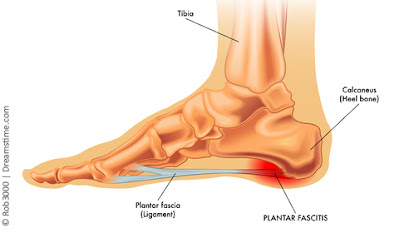Low-Intensity Extracorporeal Shock Wave Therapy (LI-ESWT) - simply referred to as SHOCKWAVE THERAPY is a multidisciplinary device used in orthopedics, physiotherapy, sports medicine, urology and veterinary medicine. Shockwave therapy utilizes an acoustic wave which carries high energy directed to tissue to treat chronic conditions that has failed with traditional treatments. The high energy that is produced promotes regeneration with the ability to repair bones, tendons, and other soft tissues.
Upon observing what’s under the white skin area, there appears a very thick white band (FASCIA covering the muscle) between the two dark layers of the subcutaneous fat and the muscle. We notice that the fascia splits into two levels with the upper arrows, denoting the top part of the split and the lower arrows showing the bottom part of the split. The black area in the split is filled with fluid indicating the fascia lining is abnormal and this is a way that we can follow the cause for the muscle irritation in future tracking. For now, we see an immediate cause and effect, which is the inflamed fascia lining and that the therapy does in fact calm down the muscle. Ultrasound imaging provides the opportunity to follow the treatment and see how the facial abnormality is healing. So we have a way of finding pathology and then discovering the causation and documenting treatment progress as well with non-invasive imaging, that is brilliant.
LEARNING FROM THE PROS: A Spotlight on a Top Clinical Professional URAN BERISHA is a Shockwave Therapist with over 7 years of education in Physiotherapy and is a staunch advocate for non-invasive therapeutics from Alberta Canada (www.unpainclinic.com) with a third practice in Kosovo. He currently supports the clinical advantages of Shockwave therapy for his patients mostly for MSK injuries and chronic pain. He is also a professional trainer in the use of Shockwave technology for clinicians (www.iloveshockwave.com). In an exclusive interview, Mr. Berisha stated having conducted over 50,000 treatments of MSK injuries in his 11-year tenure as a specialist in Shockwave therapy. Through the innovative engineering of sound vibration, “Shockwave influences full tissue treatment, treating the dysfunction as well as stimulating regeneration at the same time. You're highly involving the nervous system into the healing process... not just cell stimulation." CLARIFYING ACTUAL SHOCKWAVE There are many devices out there that can confuse the market, but to clarify, there's one type of (true) shockwave. And then there is a RADIAL PRESSURE WAVE (using air/pneumatic system) that is not a shock wave at all, but they tend to sometimes use the name shockwave in North America. The true shock wave is generated from three types of applicators, which is an electrohydraulic, electromagnetic, and piezoelectric system- that's the same as lithotripsy.  Personally, I combine both shock waves because a radial pressure wave it's more for tissue treatment. So, it would help a lot more for correcting the dysfunction, treating the muscle, relaxing, the fascia, whereas the true shock wave is more cell treatment. Shockwave stimulates angiogenesis (new blood vessels growth) and then stem cell activation leading to tissue regeneration. So, by combining those two, starting first with radial pressure wave, then doing the shockwave, you always get better results. The typical treatment plan of Shockwave Therapy consists of initially 3-5 sessions done in between 3-15 days and follow up six weeks after the last session. As far as a PREVENTIVE measure, Shockwave can be used on a regular basis (safely) one session every couple of months or every six weeks. It may prevent the prior injured tissue from recurrence, but also it removes restrictions in that area, so it keeps blood flow going and constant & active cell regeneration. Shockwave is often used on athletes as natural maintenance. Personally, I combine both shock waves because a radial pressure wave it's more for tissue treatment. So, it would help a lot more for correcting the dysfunction, treating the muscle, relaxing, the fascia, whereas the true shock wave is more cell treatment. Shockwave stimulates angiogenesis (new blood vessels growth) and then stem cell activation leading to tissue regeneration. So, by combining those two, starting first with radial pressure wave, then doing the shockwave, you always get better results. The typical treatment plan of Shockwave Therapy consists of initially 3-5 sessions done in between 3-15 days and follow up six weeks after the last session. As far as a PREVENTIVE measure, Shockwave can be used on a regular basis (safely) one session every couple of months or every six weeks. It may prevent the prior injured tissue from recurrence, but also it removes restrictions in that area, so it keeps blood flow going and constant & active cell regeneration. Shockwave is often used on athletes as natural maintenance."Today, we are firm with its use on muscle, bone, tendon, skin, kidney stones, nerve ligament and even heart regeneration where shockwave has been applied in (and instead & during) open heart surgery. There are currently over 4,000 studies in different areas of use, but it's still not enough. Practitioners are using from different perspectives- like one from Taiwan that has been tested since 2006 for pancreas regeneration. There are actual studies that they have found 200-300% improvement in blood circulation within six weeks after the initial three sessions of shockwave treatments. These same trials have demonstrated that Extracorporeal Shockwave Therapy is safe and can restore blood flow in the microcirculation in patients with a wide array of disorders from Ischemic Limbs in Patients with Peripheral Arterial Disease to the expression of nitric oxide (and vascular endothelial growth factor) to Erectile Dysfunction. Shockwave has been used widely in medicine since the better part of the 1990s starting in the Urology to the Orthopedic fields (for kidney stones, non-union fractures, bone regeneration, skin, wounds, burns etc) with first kidney stone treatment performed in Munich Germany on February 2, 1980. Shockwaves are very powerful mechanical sound waves and extremely short in terms of wavelength (10-60 nanoseconds) and they release no heat or cold into the tissues. They reach over 12 cm deep by breaking down scar tissues or adhesions that are not allowing the healing and then stimulate biological regeneration to that specific spot. If we compare focal ultrasound (HIFU) to Shockwave, in reality, uses shockwaves but just a longer wavelength that releases heat. But the very technology that they are now they're using for Alzheimer’s and Dementia that they're calling 'ultrasound' -- in reality, when you look at the ingredients, it's exactly the same as our Shockwave. FIELD APPLICATIONS Mr. Berisha referenced a practitioner who runs two clinics in the Dominican Republic- managing professional baseball players. To replace chemical stimulants and therapies, Shockwave therapy was issued to optimize athletes for muscle performance. This proves you can successfully optimize as an athlete, you can treat an athlete and you can maintain an athlete. So as with soccer games in Europe, if a soccer player has Achilles’ tendon issues, they can actually maintain the athlete to go through the game without taking any breaks, keeping it under control- then undergo regeneration treatment after the game. A GAME-CHANGER IN MODERN PRACTICE MODELING: THE BLUE ZONE MARKET Fact: a significant number of patients undergoing long, drawn-out treatments QUIT their therapies due to little or no progress. Mr. Berisha shares the widely common concerns that many hands-on clinicians have about therapeutic innovations like Shockwave and its effects on the bottom line of their business format. Where a device like a shockwave has proven to advance functional results to the patient within a few short visits, Mr. Berisha sees this only as a POSITIVE BUSINESS ASSET. His modern and progressive thinking shows a strategic paradigm for success; "All my clients pay cash (for off label treatments) and because they do, they demand results. So when you are put in that position to get paid based on results, then you are forced to think differently." He continues, "It's important that I open the mindset of every single practitioner to see the long-term solution. Many modalities work slowly, 'dragging out' treatments for many weeks or months. Something like Shockwave can get a response or wrap up a patient's of Plantar Fasciitis treatments in about three sessions or so, I tell them that 'I hope I never see you again for this problem'. Happy clients like this become my brand ambassadors where I never need to do any marketing. This converts your practice into a booming business - putting you in a blue zone market. * The information in this segment is part of NYCRANEWS.com MedTech Reviews and is published for informational purposes only and is not published for any commercial or marketing purposes. No material on this site is intended to be a substitute for professional medical advice or scientific claims- and is presented only ANECDOTAL findings pertaining to the effects and performance of the products/technologies being reviewed. |
 Common musculoskeletal conditions that have been successfully treated with shockwave therapy is lateral epicondylitis, greater trochanter pain syndrome, calcific tendonitis of the shoulder, tendinopathy of the hamstrings, patellar, and Achilles, plantar fasciitis, and shin splints. These chronic conditions can be very painful for the sufferers and frustrating for clinicians. Shockwave therapy was initially utilized in the treatment of kidney stones in the early 1980's [2]. Shockwave uses that concentrated direct energy to increase blood flow, to stimulate cell repair, and promote natural healing processes. The depth of treatment can be from 3 cm to 12.5 cm depending on settings and target areas. The application of these acoustic waves creates microtrauma to capillaries which encourages new healthy capillary formation. Shockwave therapy decreases calcified structures.
Common musculoskeletal conditions that have been successfully treated with shockwave therapy is lateral epicondylitis, greater trochanter pain syndrome, calcific tendonitis of the shoulder, tendinopathy of the hamstrings, patellar, and Achilles, plantar fasciitis, and shin splints. These chronic conditions can be very painful for the sufferers and frustrating for clinicians. Shockwave therapy was initially utilized in the treatment of kidney stones in the early 1980's [2]. Shockwave uses that concentrated direct energy to increase blood flow, to stimulate cell repair, and promote natural healing processes. The depth of treatment can be from 3 cm to 12.5 cm depending on settings and target areas. The application of these acoustic waves creates microtrauma to capillaries which encourages new healthy capillary formation. Shockwave therapy decreases calcified structures.Therapeutic Ultrasound has been a standard treatment for decades. Both US and Shockwave therapy employ acoustic waves, non-invasive and utilize a coupling median (gel) to the tissues being treated. The major differences are Shockwave Therapy utilizes lower frequency waves and no thermal effect to the tissues. Current treatment sessions are 4-6 visits with each treatment sessions lasting 10 minutes. Many people feel pain relief after the first visit. Results vary on location and severity of the condition.
1) https://www.ncbi.nlm.nih.gov/pmc/articles/PMC6029898/
4) https://www.ncbi.nlm.nih.gov/pmc/articles/PMC3607492/






































